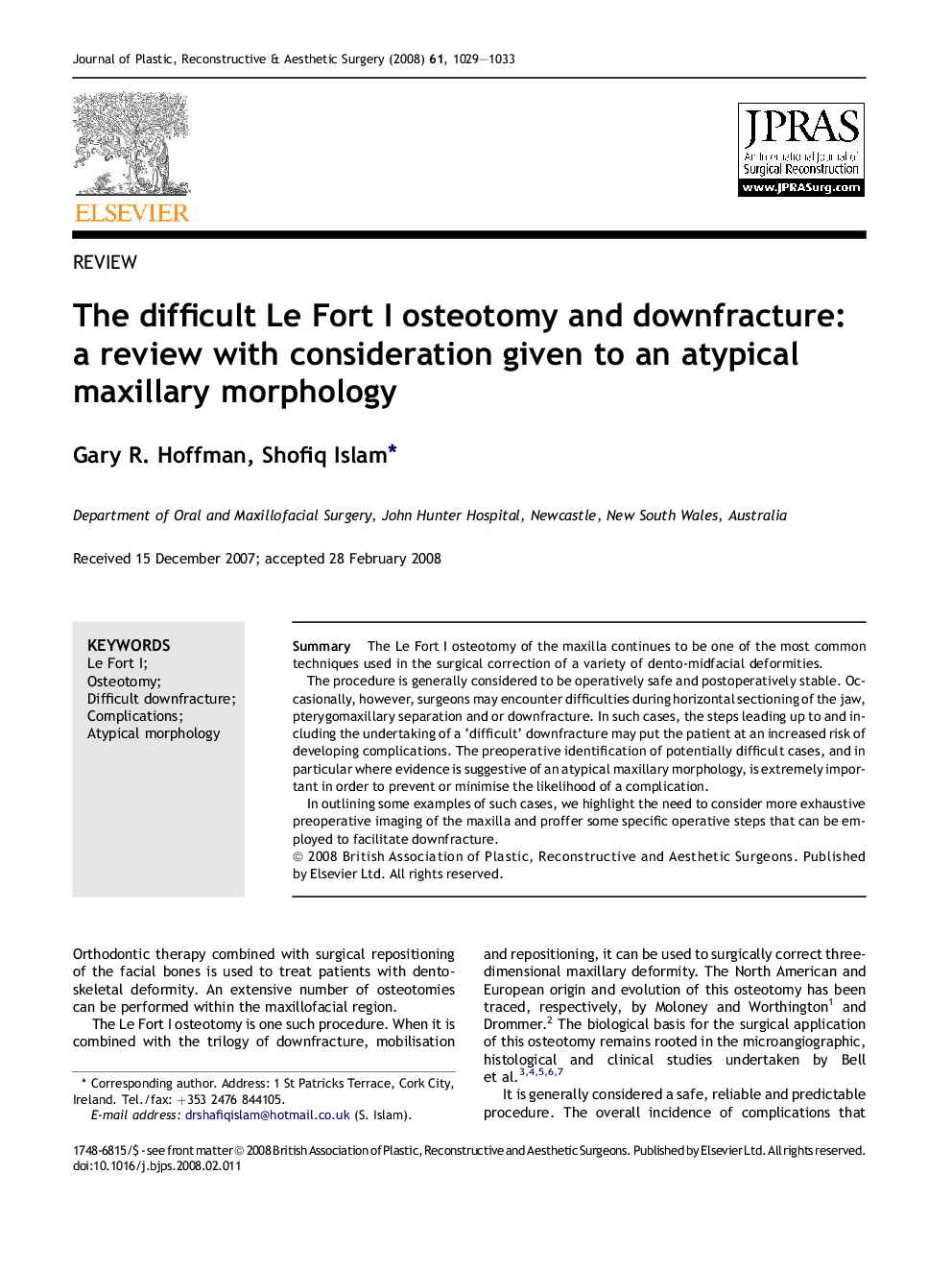| Article ID | Journal | Published Year | Pages | File Type |
|---|---|---|---|---|
| 4120481 | Journal of Plastic, Reconstructive & Aesthetic Surgery | 2008 | 5 Pages |
SummaryThe Le Fort I osteotomy of the maxilla continues to be one of the most common techniques used in the surgical correction of a variety of dento-midfacial deformities.The procedure is generally considered to be operatively safe and postoperatively stable. Occasionally, however, surgeons may encounter difficulties during horizontal sectioning of the jaw, pterygomaxillary separation and or downfracture. In such cases, the steps leading up to and including the undertaking of a ‘difficult’ downfracture may put the patient at an increased risk of developing complications. The preoperative identification of potentially difficult cases, and in particular where evidence is suggestive of an atypical maxillary morphology, is extremely important in order to prevent or minimise the likelihood of a complication.In outlining some examples of such cases, we highlight the need to consider more exhaustive preoperative imaging of the maxilla and proffer some specific operative steps that can be employed to facilitate downfracture.
